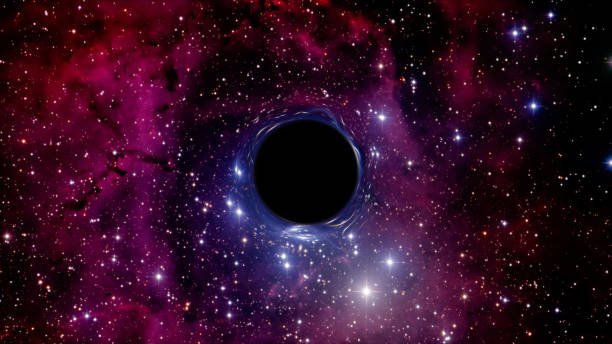
Astronomers are excited by the latest observations of a black hole, which sucks in everything around it due to its powerful gravity, published in the British scientific journal "nature" in April 2023.
Even when we learn something new, there is always something else we don't know. We are in a state of being unable to escape from the bottomless mystery of astronomical research.
Kazuhiro Hata, assistant professor at the Mizusawa VLBI Observatory of the National Astronomical Observatory of Japan (NAOJ), who led the international joint research project involving more than 100 astronomers from Japan and abroad, said excitedly, "We are now in a situation where we cannot escape from the bottomless pit of mystery.
Let's take a look at the press conference held by NAOJ to find out what makes them so excited and what is at the forefront of their research.
A black hole is an extremely dense celestial body that is very small in spite of its weight. Its gravity is so strong that once it swallows up all the light and matter around it, it can never come out again!
The concept of a black hole was first proposed in the 18th century, and it was not until the 20th century that theoretical research into whether or not black holes actually existed began in earnest. The physicist Dr. Albert Einstein had a major influence on the progress of theoretical research.
In place of Newton's theory, which had been the center of physics up to that time, Einstein proposed the general theory of relativity, which produced the ludicrous result that "even the fastest light in the world cannot escape from inside a celestial body when its radius becomes smaller than a certain point. For a celestial body of the same mass as the sun, the radius was only about 3 kilometers.
Later, with the development of methods to observe radio waves coming from space, the existence of black holes became a certainty after the 1960s. In April 2019, the National Astronomical Observatory of Japan and others announced that they had proved the existence of a giant black hole with a mass 6.5 billion times that of the sun and its shadow at the center of the elliptical galaxy M87, which lies 55 million light years away. Many of you may remember the news that "for the first time in history, a black hole was successfully photographed.
In fact, the latest results announced in April 2023 will also observe the same M87 galaxy as in the 2019 announcement.
However, while the previous results were taken "only very close" to the giant black hole, the latest research results examine a wider area around the giant black hole.
According to Assistant Professor Hata, one of the lead authors of the paper, a black hole consists of the following "three sets
The main body of the black hole
An "accretion disk" that supplies the black hole with gas, the source of its growth
A jet, which is a stream of gas emanating at high speed from the vicinity of the black hole
These three sets are indispensable for understanding black holes, but until now we have only been able to photograph the black hole at the center of the galaxy and the jet far away from the black hole separately. This time, for the first time, we were able to capture the accretion disk, which we had not been able to photograph directly, together with the jet in a single photograph," says Assistant Professor Hata.
The image captured by Dr. Hata and his international research team was as follows.
In the center of the image is a brightly shining ring-shaped structure, and on the right side, three gas jets are faintly visible. So, what did we learn from this observation?
First, the research team examined what the ring structure observed this time was.
Speaking of rings, a ring-shaped structure was also captured in an image of a black hole taken in 2019.
However, the apparent diameter of the ring observed this time is equivalent to 0.017 light years (one light year is the distance light travels in one year), which is about 1.5 times larger and thicker than the ring structure observed in 2019.
The research team considered various scenarios for the "large and thick" ring seen this time using computer simulations. As a result, they concluded that the ring is definitely larger and thicker than the one observed in 2019, and it is reasonable to assume that it is an "accretion disk" spreading around a giant black hole.
Professor Masanori Nakamura of Hachinohe National College of Technology, who attended the press conference with Assistant Professor Hata, said
The last veil of the active galactic nucleus, the accretion disc, has been revealed by direct imaging," said Professor Masanori Nakamura of Hachinohe Institute of Technology, who attended the press conference with Assistant Professor Hata. This is an extremely important development in black hole astronomy.
He emphasized the significance of this achievement.